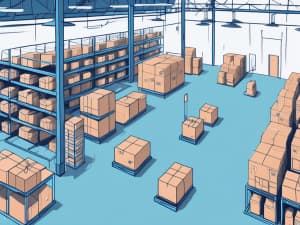20 Smart Ways to Cut Costs in a Complex Global Trade Environment
The global trade landscape is shifting fast—with rising tariffs, changing regulations, and growing geopolitical risk. For fast-growing brands, these changes aren’t just frustrating—they’re expensive. But in every challenge lies opportunity.
At Izba, we help brands rethink their sourcing, logistics, and operations to build smarter, more resilient supply chains. Here are the most practical and often-overlooked ways to cut costs and protect margins—without sacrificing product quality or customer experience.
🔧 Sourcing & Manufacturing
Start by revisiting contracts with your co-manufacturers and suppliers. Use your existing relationship and volume as leverage to negotiate better payment terms (e.g., net 90) or pricing tiers.
Go line-by-line through your BOMs to flag expensive components, packaging, or specialty finishes. Ask: can we switch to a local or lower-cost alternative—especially for non-core elements?
With tariffs on the rise, don’t just look at the final assembly location—assess where each component originates. You may be able to reduce duties by relocating sourcing or production to lower-tariff countries.
The right HTS code can make a big difference in duty rates. Review your classifications (with legal counsel or a trade expert) to ensure you’re using the most favorable and accurate codes.
Consider moving inventory into bonded warehouses or free trade zones to defer taxes until goods enter their final market. This gives you more flexibility and may reduce duties altogether.
Dual sourcing may feel complex upfront, but it builds long-term leverage and flexibility. Having more than one qualified manufacturer can keep costs competitive and avoid bottlenecks.
📦 Logistics, Fulfillment & Inventory
Have your volumes or shipping mix changed? It might be time to revisit your 3PL contract. Vendors often offer better pricing when you come to the table with updated data and a strong relationship.
Rate creep is real. Audit your fulfillment and shipping rate cards—then benchmark against competitors. You might be overpaying and not even know it.
Warehousing fees add up—especially if you’re holding excess inventory to hedge against tariffs. Don’t trade one cost for another. Monitor aging stock and plan exits strategically.
Returns pile up quickly and quietly. By accurately tracking what’s coming back and where it's sitting, you can avoid unnecessary re-orders and better manage storage fees.
Explore alternative carriers, consolidate shipments, and optimize packaging sizes. Small tweaks can yield big savings.
Fulfilling from regional nodes (e.g., EU, Canada, Asia) can reduce last-mile costs, speed up delivery, and lower or defer tariffs.
Holding inventory closer to your end customers—even across multiple countries—can reduce duties and transit time. While more complex operationally, it often pays off for global brands.
💰 Financial Strategy
Model Tariff Impact on Cash Flow
Don’t fly blind—build financial models to forecast tariff costs across your P&L. This helps you make informed trade-offs and avoid knee-jerk reactions.
Retailer and Amazon chargebacks are costly—but often disputable. Partner with specialists to recover funds or build internal processes to catch and appeal them.
Improved payment terms upstream and downstream—from suppliers to retailers—can make a major difference in working capital and reduce the need for outside financing.
🧠 People & Process
Whether it’s HTS code classification or global logistics strategy, expert support can uncover cost savings you might miss in-house. The right consultant often pays for themselves in a single engagement.
Good decisions start with good data. Ensure your team has accurate, up-to-date info on inventory, BOMs, landed costs, and product origins to act with confidence.
Saving money in today’s trade environment isn’t just a supply chain issue—it’s a company-wide effort. Make sure product, finance, operations, and sourcing are all aligned on cost and risk priorities.
🧪 Product Development
Tariff considerations should happen before products are finalized. Even small tweaks—like switching a zipper or changing materials—can shift your HTS code or open up new sourcing options.
Final Thoughts
Cost-saving in a volatile trade landscape doesn’t have to mean cutting corners. With the right strategies in place, you can build a more resilient, responsive, and profitable operation.
Need help modeling the impact of tariffs or reevaluating your supply chain strategy?
Reach out to the Izba team—we’d love to help you navigate what’s next.
Related Insights

The Future of Automation in Ecommerce Businesses
Explore the various aspects of automation in ecommerce and discuss its potential impact and future developments.

5 Mistakes That Ruin a Supply Chain Stress Test
Wargames only work if they lead to real changes. Here are 5 supply chain stress test mistakes teams make.

5 Ways to Sustain Post Acquisition Momentum Beyond Day One
Deals close fast. Momentum fades faster. Learn how to fuel post acquisition momentum that lasts.